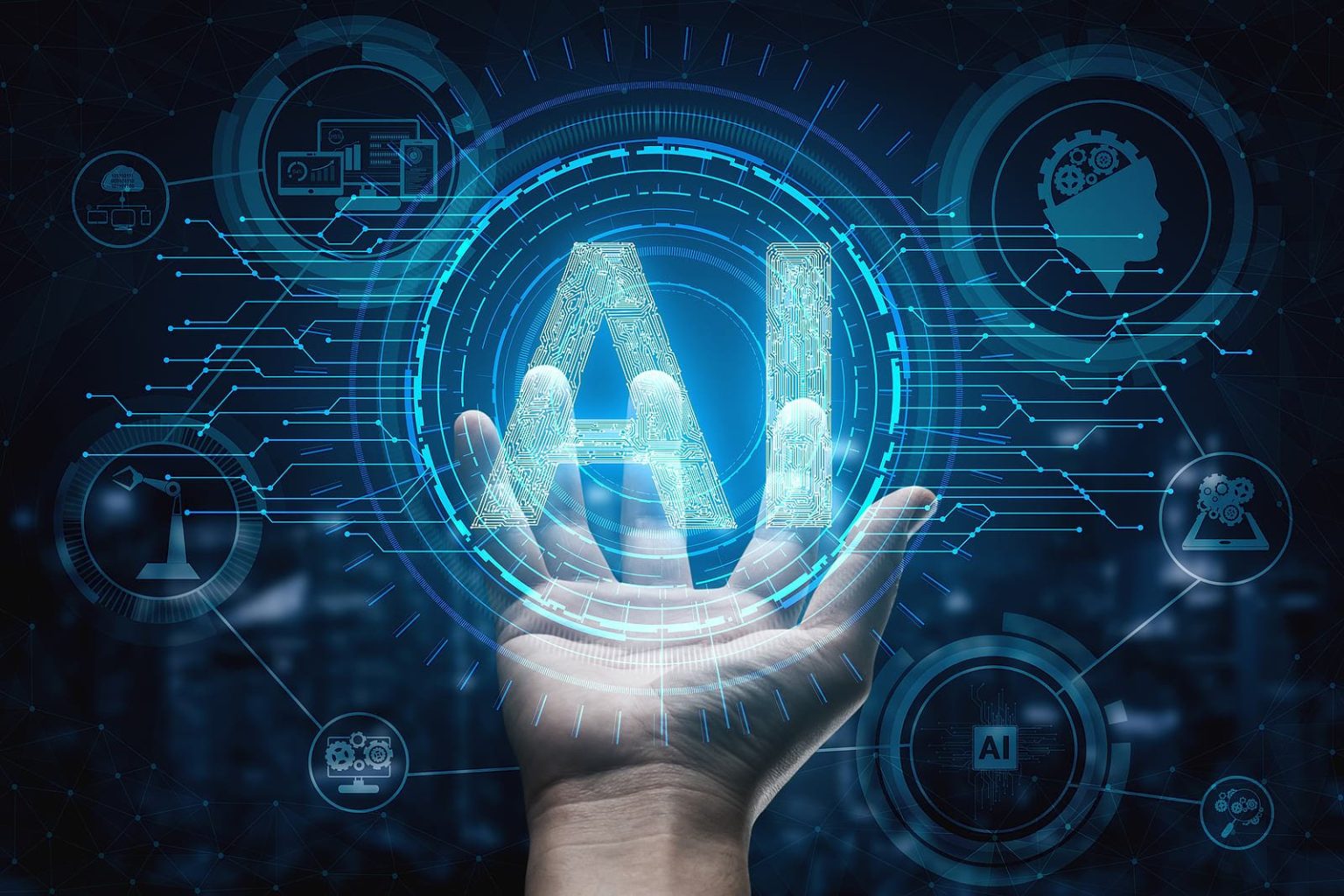In recent years, the field of artificial intelligence (AI) has undergone a remarkable transformation, revolutionizing various aspects of our lives. From self-driving cars and virtual assistants to advanced healthcare systems and personalized recommendations, AI has become an integral part of modern society. In this blog post, we delve into the captivating journey of AI, exploring its evolution, breakthroughs, and future prospects.
THE BIRTH OF AI
The origins of AI can be traced back to the 1950s when pioneers like Alan Turing and John McCarthy laid the foundation for this groundbreaking field.
The development of the first AI programs.
Read MoreThe early concepts of artificial intelligence (AI) can be traced back to the 1950s when researchers began exploring the possibility of creating machines that could exhibit intelligent behavior. Two significant events during this period were the Dartmouth Conference and the development of the first AI programs.
The Dartmouth Conference, held in the summer of 1956, is widely regarded as the birth of AI as a formal field of study. The conference was organized by John McCarthy, Marvin Minsky, Nathaniel Rochester, and Claude Shannon, who brought together a group of researchers interested in exploring the potential of machine intelligence. During the conference, participants discussed various topics related to AI, including problem-solving, language processing, and simulation of human intelligence.
Following the Dartmouth Conference, researchers began developing the first AI programs. One notable early program was the Logic Theorist, developed by Allen Newell and Herbert A. Simon at the RAND Corporation in 1955. The Logic Theorist was designed to prove mathematical theorems using symbolic logic, demonstrating automated reasoning capabilities.
Another significant milestone in the development of AI programs was the General Problem Solver (GPS) developed by Newell, Simon, and J.C. Shaw in 1957. The GPS was an algorithmic problem-solving program that could work on a wide range of problems by applying heuristics and searching through possible solutions. It marked an important step towards creating systems that could solve problems in a general, flexible manner.
During this early period, researchers explored various approaches to AI, including symbolic reasoning, logical inference, and early attempts at machine learning. However, progress was slow, and the limitations of available technology became apparent. The computational power and storage capabilities of computers at that time were significantly less than what we have today, which limited the complexity and scale of AI programs.
Nonetheless, the Dartmouth Conference and the development of the first AI programs laid the groundwork for future advancements in the field. They ignited interest and inspired generations of researchers to pursue the dream of creating intelligent machines.
It is important to note that while these early concepts and programs were groundbreaking at the time, they represented only the initial steps in the long and evolving journey of AI. Subsequent decades witnessed periods of both excitement and disillusionment, leading to advancements in machine learning, neural networks, and deep learning that brought AI to the forefront of technological innovation in recent years.
The AI Winter
The 1970s and 1980s were a challenging period for artificial intelligence (AI) and are often referred to as the “AI Winter.” During this time, AI research faced significant setbacks and experienced a decline in interest and funding. Several factors contributed to the challenges faced by AI during this period.
One major issue was the unmet expectations surrounding AI capabilities. In the early years, there was great optimism and belief that AI would quickly achieve human-level intelligence. However, as researchers delved deeper into the complexities of intelligence and faced technical limitations, it became apparent that achieving true AI was a far more challenging task than initially anticipated. The progress made in early AI programs was limited and fell short of the high expectations set by the field.
Additionally, the limitations of available technology hindered AI research during this time. The computational power and memory capacity of computers were significantly lower compared to today’s standards. This restricted the complexity and scale of AI algorithms and hindered the development of sophisticated AI systems.
Another factor contributing to the AI Winter was the lack of viable real-world applications. While AI research showcased promising advancements, practical implementation and commercialization were limited. The gap between theoretical AI concepts and practical applications led to skepticism and a decline in funding.
The AI Winter was also influenced by economic and political factors. The high cost of AI research, coupled with economic recessions and budget cuts, led to reduced funding and support for AI projects. Additionally, changing government priorities and shifting research interests diverted resources away from AI research.
The AI Winter, however, was not entirely negative. It prompted researchers to reassess their approaches and focus on more practical and achievable goals. It also led to advancements in expert systems and knowledge-based systems, which demonstrated tangible benefits in specific domains such as medical diagnosis and engineering.
The Rise of Machine Learning
Machine learning played a pivotal role in reinvigorating the field of artificial intelligence (AI) in the 1990s and early 2000s, bringing about a significant shift in AI research and applications. This period witnessed key breakthroughs, including the development of neural networks and the rise of data-driven approaches, which laid the foundation for modern AI.
One crucial advancement was the development of artificial neural networks, inspired by the structure and function of the human brain. Neural networks are composed of interconnected nodes (neurons) that process and transmit information. The capability of neural networks to learn from data and improve their performance over time became a cornerstone of machine learning.
Geoffrey Hinton, a prominent researcher, made significant contributions to neural networks and their training algorithms. He introduced the backpropagation algorithm in the 1980s, which enabled the efficient training of multi-layer neural networks. Hinton’s work demonstrated the power of deep learning, where neural networks with multiple layers can learn hierarchical representations of data, leading to improved performance in complex tasks.
Another influential researcher in this era was Yann LeCun, who contributed to the development of convolutional neural networks (CNNs). CNNs revolutionized image recognition and computer vision tasks. LeCun’s work on the LeNet-5 architecture in the 1990s demonstrated the effectiveness of CNNs in handwritten digit recognition, paving the way for their application in various visual recognition tasks.
The availability of large datasets became a crucial factor in advancing machine learning. Data-driven approaches, where models learn patterns and make predictions based on extensive data, gained prominence. The field saw a shift from handcrafted rules and heuristics to algorithms that could learn directly from data.
The rise of the internet and the digitization of vast amounts of information contributed to the availability of data for training machine learning models. Researchers started exploring techniques like ensemble learning, support vector machines (SVMs), and decision trees, which leveraged the power of data to improve accuracy and performance.
These advancements in machine learning sparked renewed interest in AI research. The combination of neural networks, data-driven approaches, and increased computational power enabled significant progress in various domains. Machine learning algorithms began to outperform traditional rule-based systems in tasks such as image recognition, speech recognition, natural language processing, and recommendation systems.
AI in Practice
AI is revolutionizing numerous industries, bringing about transformative changes. In healthcare, AI aids in diagnosis, drug discovery, and personalized treatment plans. Examples include AI-powered medical imaging for early disease detection and AI algorithms that analyze patient data for precision medicine. In finance, AI enables fraud detection, algorithmic trading, and risk assessment. Chatbots powered by AI enhance customer service in various sectors. In transportation, autonomous vehicles driven by AI technology promise safer and more efficient mobility. In entertainment, AI is used for content recommendation systems, personalized advertisements, and immersive gaming experiences.









